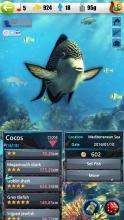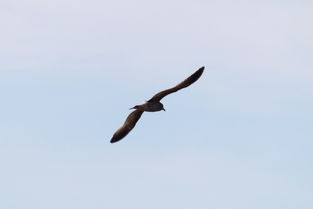Content:
Summer is a prime time for anglers to hit the water in search of the elusive needlefish, known for its slender, needle-like body and swift movements. These fish are not only a challenge to catch but also a source of great satisfaction when you land one. Here are some essential techniques to help you master the art of catching needlefish during the summer months.
Understanding Needlefish Behavior
Before you set out to fish for needlefish, it's crucial to understand their behavior. Needlefish are known for their high speed and agility, often darting in and out of the water. They are most active during the warmer months, particularly in the early morning and late afternoon when the water is cooler. They are also known to be found in shallow waters, such as bays, inlets, and coastal areas.
Choosing the Right Equipment
To catch needlefish, you'll need the right equipment. Here are some key pieces of gear to consider:
Rod and Reel: A medium-heavy to heavy-duty spinning rod with a fast-action tip is ideal for needlefish. The reel should be capable of handling strong drag and be equipped with a good quality drag system.
Line: Use a monofilament line with a breaking strength of at least 20 pounds. The lighter the line, the more sensitive it will be, which is crucial for detecting the subtle strikes of needlefish.
Lures and Baits: Live bait, such as small fish or shrimp, can be highly effective. Artificial lures, like swimbaits or jigs, can also work well. The key is to mimic the movement and appearance of needlefish prey.
Timing and Location
To increase your chances of catching needlefish, focus on the following:
Time of Day: Fish for needlefish during the cooler parts of the day, such as early morning or late afternoon. This is when they are most active and likely to feed.

Location: Target areas where needlefish are known to congregate. This could be near structures like rocks, jetties, or bridges, or in areas with a strong current or tidal movement.
Fishing Techniques
Once you're set up and in the right location, here are some fishing techniques to try:
Trolling: Trolling is a popular method for catching needlefish. Use a lure or live bait and move slowly through the water, allowing the current to pull the bait in a natural manner. Keep an eye on your line for any sudden movements or tugs.
Cast and Retrieve: Cast your lure or bait out into the water and retrieve it back at a steady pace. Needlefish are known to strike when the bait is in motion, so a consistent retrieve can be effective.
Jigging: If you're fishing in deeper waters, try jigging. Drop your lure or bait to the bottom and then lift it up and down in short, sharp bursts. This mimicry of prey struggling can trigger a strike.
Patience and Sensitivity: Needlefish strikes can be very subtle. Be patient and sensitive to your line. A sudden tap or a quick pull could be a needlefish testing the bait.
Handling and Release
Once you've landed a needlefish, it's important to handle it with care:
Keep it Alive: If you plan to release the fish, keep it in the water until it's ready to swim off. This can be done by holding the fish in the water with your hand, using a landing net, or by placing it in a livewell.
Handle with Care: Avoid unnecessary rough handling, as needlefish have very sharp spines that can cause injury.
Release Strategy: If you decide to release the fish, do so as quickly and gently as possible to minimize stress.
In conclusion, catching needlefish in the summer requires patience, the right equipment, and a good understanding of their behavior. By following these techniques and focusing on the best times and locations, you'll be well on your way to mastering the art of needlefish fishing. Remember to respect the marine environment and practice catch-and-release whenever possible to ensure the sustainability of these magnificent creatures.












